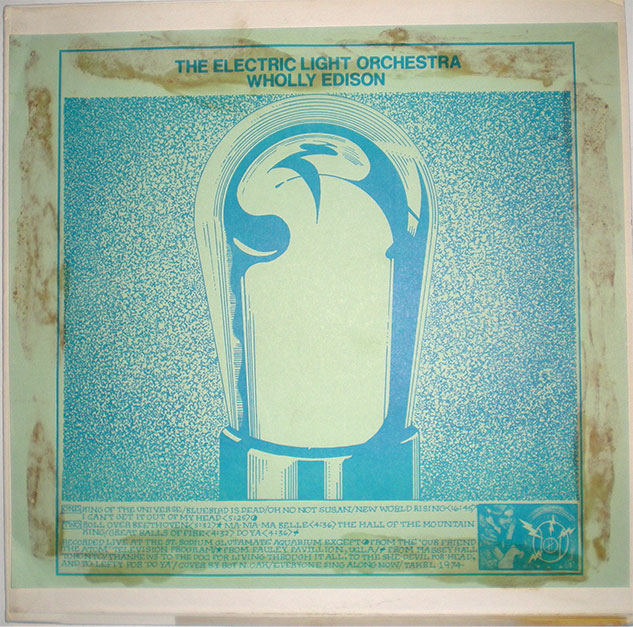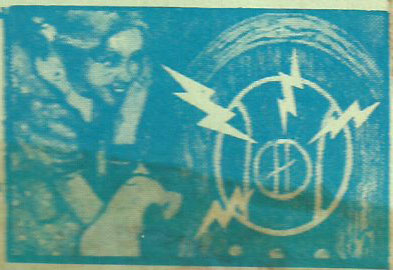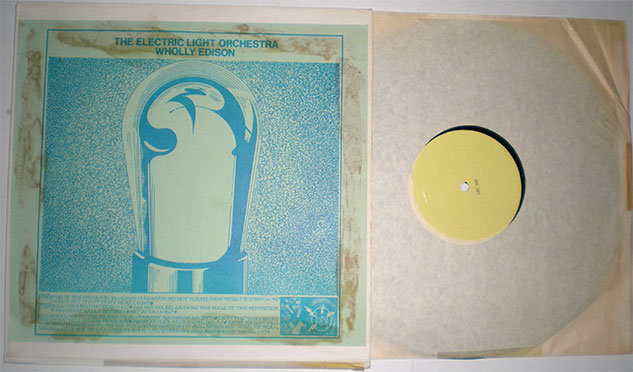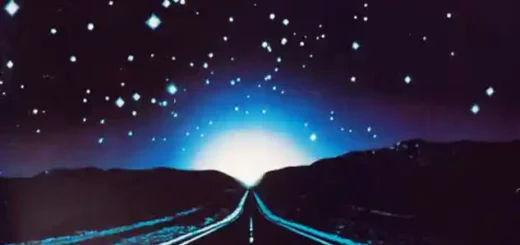ELO Bootlegs / Los 4 clásicos de los 70´s (primera parte)

Aunque en menor cantidad (desafortunadamente) que otras bandas de rock como Led Zeppelin, Bruce Springsteen, Rolling Stones, The Beatles, Metallica o Kiss, solo por nombrar unos pocos “clásicos” del pirateo; la ELECTRIC LIGHT ORCHESTRA también fué introducida en este mundo en los años 70´s.
En este artículo dividido en 4 partes, viajaremos al pasado y haremos una pequeña revisión de estos «four little diamonds», intentando acercar a los fans de ELO estos valiosísimos tesoros.

Wholly Edison
Lanzado al mundo por el mítico sello-bootleg “The Amazing Kornyfone Record Label” (TAKRL), Wholly Edison fué el primer bootleg de la historia de la ELO.
Presentado como un LP sencillo y en el típico formato bootleg de una hoja suelta, de color verde, con los créditos, fotos e información en color azul, pegada a una carpeta blanca sin ningún tipo de texto ni detalle alguno.
Hay alguna excepción con respecto a este formato en algunas versiones del Freedom City Pandemoniun y el America Sees The Light, puesto que en éstas versiones las portadas no son hojas sueltas, sinó que son portadas impresas normales y con más información y texto en la cubierta trasera como veremos mas adelante.
La referencia del LP es TAKRL 1974 y el año en que vio la luz es 1974 (¿a propósito o simple coincidencia?)
En la parte inferior derecha aparece el familiar logotipo de TAKRL: una niña sonriente y su perro escuchando atentos un antiguo aparato de radio.

La grabación tiene un sonido regular y no es de un mismo concierto. Algunos temas provienen de diferentes fuentes (y quizá épocas) (con una “sospechosa” versión de «Do Ya» que parece ser más de The Move que de ELO), aunque representa un clásico show de ELO de 1974 con un típico (aunque simplificado) set-list del momento.
El dibujo de la portada, quizás reclame la creación de Edison como primer emblema de la banda…
Los creditos del LP son los siguientes:
ONE: King Of The Universe // Bluebird Is Dead // Oh No Not Susan // New World Rising (Live at The St. Sodium Glutamate Aquarium) // Can´t Get It Out Of My Head (From Our Friend The Atom television program).
TWO: Roll Over Beethoven (From Pauley Pavillion, UCLA) // Ma-Ma-Ma Belle // The Hall Of The Mountain King // Great Balls Of Fire ((Live at The St. Sodium Glutamate Aquarium) // Do Ya (From Massey Hall, Toronto).
Thankews to the dog for living throught it all, to the she-devil for “Head”, and to lefty for “Do Ya”.
Cover by N.Oak. Everyone sing along now.
TAKRL 1974.

Un poco de historia.
Las grabaciones bootlegs aparecieron por primera vez en 1969.
El primer rock-bootleg fue un doble álbum de Bob Dylan llamado: “Great White Wonder”.
Algunos de los sellos-bootlegs pioneros fueron “Rubber Dubber”, “Contraband Music”, “Kustom Records”, “Pig´s Eye”, “Trade Mark of Quality”, “Wizardo Records”, “The Amazing Kornyfone Record Label” o “Hoffman Avenue Records” y por supuesto todos ellos realizaban sus trabajos en vinilo; el bootleg en CD no se introduciría hasta 1989 y es en los primeros 90´s cuando el CD bootleg inicia su expansión; llegando hasta nuestros días una cantidad incontable de material de este tipo (incluyendo, como no, a la ELO y sus relativos).
ELOSPAIN:
Although in lesser quantity (unfortunately) than other rock bands like Led Zeppelin, Bruce Springsteen, Rolling Stones, The Beatles, Metallica, or Kiss, just to name a few "classics" of bootlegging; the ELECTRIC LIGHT ORCHESTRA was also introduced into this world in the 1970s.
In this article divided into 4 parts, we will travel back in time and take a brief look at these "four little diamonds," trying to bring these invaluable treasures closer to ELO fans.
Wholly Edison
Launched into the world by the legendary bootleg label "The Amazing Kornyfone Record Label" (TAKRL), Wholly Edison was the first ELO bootleg in history.
Presented as a single LP and in the typical bootleg format of a loose green sheet with credits, photos, and information in blue, glued to a white folder without any text or details.
There is an exception to this format in some versions of Freedom City Pandemoniun and America Sees The Light, as in these versions, the covers are not loose sheets but normal printed covers with more information and text on the back cover, as we will see later.
The LP reference is TAKRL 1974, and it was released in 1974 (on purpose or a simple coincidence?)
In the lower right corner is the familiar TAKRL logo: a smiling girl and her dog listening attentively to an old radio.
The recording has a regular sound and is not from the same concert. Some songs come from different sources (and perhaps times) (with a "suspicious" version of "Do Ya" that seems more like The Move than ELO), although it represents a classic ELO show from 1974 with a typical (though simplified) set-list of the moment.
The drawing on the cover may claim the creation of Edison as the band's first emblem…
The credits of the LP are as follows:
ONE: King Of The Universe // Bluebird Is Dead // Oh No Not Susan // New World Rising (Live at The St. Sodium Glutamate Aquarium) // Can´t Get It Out Of My Head (From Our Friend The Atom television program).
TWO: Roll Over Beethoven (From Pauley Pavillion, UCLA) // Ma-Ma-Ma Belle // The Hall Of The Mountain King // Great Balls Of Fire ((Live at The St. Sodium Glutamate Aquarium) // Do Ya (From Massey Hall, Toronto).
Thankews to the dog for living through it all, to the she-devil for “Head,” and to lefty for “Do Ya.”
Cover by N.Oak. Everyone sing along now.
TAKRL 1974.
A bit of history.
Bootleg recordings first appeared in 1969.
The first rock bootleg was a double album by Bob Dylan called "Great White Wonder."
Some of the pioneering bootleg labels were "Rubber Dubber," "Contraband Music," "Kustom Records," "Pig´s Eye," "Trade Mark of Quality," "Wizardo Records," "The Amazing Kornyfone Record Label," or "Hoffman Avenue Records," and of course, all of them did their work on vinyl; the CD bootleg would not be introduced until 1989, and it's in the early '90s when the CD bootleg begins its expansion; countless bootleg material has been produced to this day (including, of course, ELO and its relatives).



